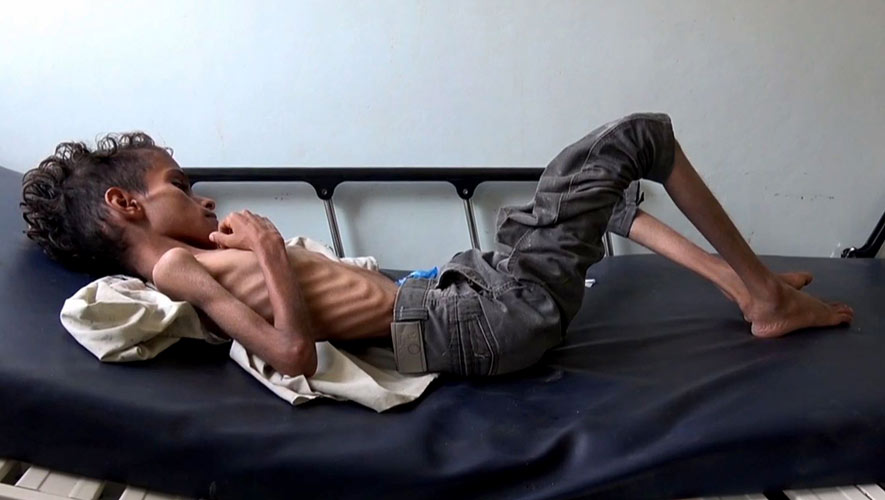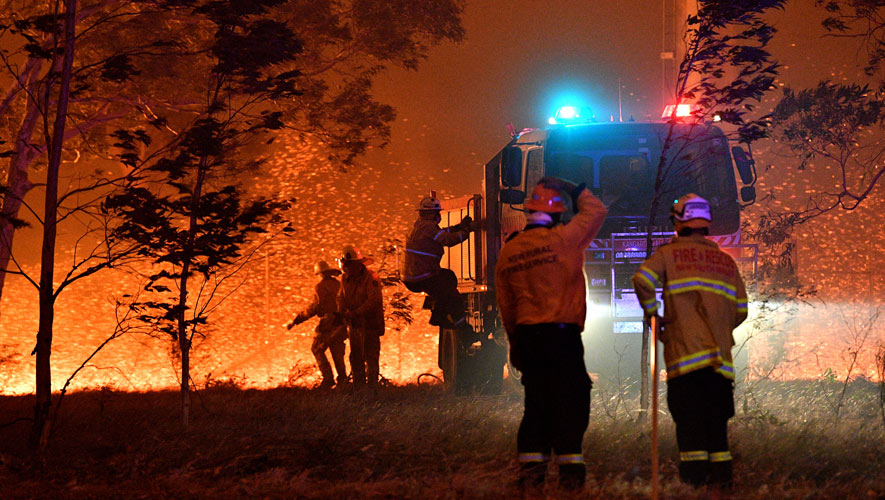The greatest threat to humanity hides in the potential cascading effects of five highly-related, highly-likely risks – a collision that can amplify these effects catastrophically, according to a new survey of 222 leading scientists from 52 countries. Conducted by Future Earth, the international sustainability research network, the survey identifies five global risks – failure of climate change mitigation and adaptation; extreme weather events; major biodiversity loss and ecosystem collapse; food crises; and water crises – as the most severe in terms of impact. Four of them – climate change, extreme weather, biodiversity loss, and water crises – were also deemed by scientists as most likely to occur.
For the latest Cambodian Business news, visit Khmer Times Business
Business leaders and policymakers, in a survey released in January by the World Economic Forum, likewise assigned these same five risks, chosen from a set of 30, top rank positions in terms of impact. More than one-third (82) of the scientists, however, underlined the threat posed by the synergistic interplay and feedback loops between the top five – with global crises worsening one another “in ways that might cascade to create global systemic collapse”.
Extreme heatwaves, for example, can accelerate global warming by releasing large amounts of stored carbon from affected ecosystems and, at the same time, intensify water crises and/or food scarcity; the loss of biodiversity weakens the capacity of natural and agricultural systems to cope with climate extremes, increasing vulnerability to food crises.
Some 173 of the scientists surveyed volunteered additional risks, beyond the list of 30, as deserving greater global attention. Commons themes included erosion of societal trust and values; social infrastructure deterioration; rising inequality; rising political nationalism; overpopulation; mental health decline.
Said the report: “Interestingly, the majority of these touch on issues of societal well-being and social security, suggesting that societal risks may be growing and in need of greater consideration. This is especially pertinent as we consider how society can transition to a climate-safe and equitable future… Perhaps the most interesting theme to emerge from these responses was the failure to take into account feedback across different systems. Despite this ubiquity of connections, many scientists and policymakers are in institutions that are used to thinking and acting on isolated risks, one at a time. This needs to change to thinking about risks as connected. “As the scientific advisers for this survey, we call on the world’s academics, business leaders and policymakers to pay urgent attention to these five global risks and to ensure that they are treated as interacting systems, rather than addressed… in isolation.”
Today’s environmental problems, the report says, represent a blend of physical, chemical, biological, and social change that all interact and feedback on each other. “Trying to understand how our impacts in one area, such as river extraction, affect another, such as food provision, is a complex task,” the report says. “But that’s what scientists, sociologists, economists, ecologists, and others are trying to do.
“And while our problematic practices in one area can affect many other areas, the good news is that so can our restorative ones: improving biodiversity in a wetland ecosystem can also reduce water pollution and soil erosion and protect crops against storm damage, for instance. We are making our own Anthropocene and we can make it a good one.”
Among the issues highlighted in the report are the following.
* The rise and impact of populism, “characterizsed by a denial of complexity, including the complexity of environmental damage and the systemic, multi-layered interactions required to achieve sustainability,” as well as “fake news”.
* Increasing financial risk of climate and environmental change. Now deemed by insurers as their industry’s top risk, the report notes the first climate-change-related bankruptcy: California’s largest electric utility fir, PG&E went under last year after sparking a huge forest fire.
* Trends in migration, and the impacts of digital technologies, including artificial intelligence, on sustainability.

* The ecological and social science of climate change, our food systems, and the collapse in biodiversity; developments in regulating the high seas; the rise of green finance mechanisms; the new field of studying “transformations” in society: How, exactly, can we uproot ingrained ideas about economic development or wellbeing and wrench them into new, more sustainable frameworks?
“2020 is a critical time to look at these issues,” says Amy Luers, executive director of Future Earth. “Our actions in the next decade will determine our collective future on earth.”
We are a vast global population facing unprecedented environmental challenges, yet we still have the time and the capability to prevent extreme outcomes. The past year has been one of extraordinary social awakening to the hazards of environmental change and of demands for action towards a sustainable future. “Green deals” have been proposed by several nations and, if passed into legislation, they could prove transformative. The global population is expected to be 9.7 billion by 2050. Their future is in our hands: Can we make it more sustainable, resilient and fair?
Over the last 18 months, major assessments by the Intergovernmental Panel on Climate Change (IPCC), the US National Climate Assessment, and the Intergovernmental Science-Policy Platform on Biodiversity and Ecosystem Services (IPBES), have all argued that time is running out to reduce greenhouse gas emissions that are causing the climate to warm.
This has inspired declarations of a climate crisis or climate emergency by the leaders of more than 700 cities, states and governments. Yet, during 2019, the concentration of CO2 in the atmosphere reached more than 415 parts per million, and the five years from 2014 to 2018 were the warmest recorded over land and ocean since 1880.
Despite the evidence, “many countries have not yet risen to the challenge or are reversing prior commitments”. What is needed to dial down the heat.
Right-wing populism is on the rise around the world: a breed of politics that exploits peoples’ fears during times of economic decline and growing inequality and that focuses on nationalist tendencies to clamp down on borders and reject immigrants. Populism is often characterised by a “denial of complexity”, preferring to identify simple, seductive culprits for the erosion of society, the economy and the welfare of the masses. This often leads to a denial of climate change facts or effects. But grassroots organisations are emerging as a potentially strong, countervailing force. But is it politically strong enough and will it work?
More than 3 billion people are dependent on marine ecosystems as their primary source of protein and the livelihoods of nearly half of humanity are linked to marine and coastal biodiversity. While the ocean was once considered too big to be significantly altered through human activity, it is now clear that it too has entered the Anthropocene, an age in which humans are the dominant influence. Stressors from climate change to pollution, fishing and shipping, have nearly doubled over the past decade. Officials from around the world are now negotiating a new United Nations treaty to govern the high seas (Biological diversity of areas Beyond National Jurisdiction), which may be hashed out this year. What are the expectations and challenges for regulating fish, seafloor mining, biodiversity and more?
As of September 2019, the Syrian conflict had resulted in more 5.6 million refugees seeking refuge mainly in Turkey, Lebanon, and Jordan. As of 2018, 800,000 people had fled their home countries in North Africa as asylum seekers and refugees, some embarking on often-deadly boat trips across the Mediterranean. For many observers in the wealthy, industrialised North, the influx of migrants from Central America and the Middle East has been seen as a sign of an impending flood: their assumption is that climate change effects will spur violence and/or push hundreds of millions of people into their borders, causing yet more violence and other problems. The truth is more nuanced. Humanity is not at the mercy of forces seemingly beyond our control: It is policy, not climate change, behind the real crises. The flow of information in the world is changing. Today, around half of the planet’s 7.6 billion people are online, where they are deeply influenced by social media, search engines and ecommerce algorithms. These digital platforms tend to favour the spread of information designed to engage with emotion over reason, can cause the propagation of “fake news” and can lead to social harms such as an erosion of trust in vaccines. Some politicians are now calling for the tech giants to be split up, arguing that their power and dominance is bad for democracy. Digital information technologies and media, although messy, could support global action for sustainability. Yet it remains unclear whether information technologies will drive the Earth towards a pandemic or away from it; towards a destabilised climate or a potentially-manageable 1.5°C warmer world.
Humans have now “significantly altered” 75 percent of our planet’s land area; about a quarter of species in assessed plant and animal groups are threatened. In 2018, the world’s last male northern white rhino died in his Kenyan enclosure. The Brazillian blue parrot, Spix’s Macaw, was declared extinct in the wild, among a handful of other birds. And yet studies continue to show that biodiversity helps to make landscapes more resilient to climate change. Countries are now in the process of negotiating a “Global Deal for Nature”: a new global biodiversity framework to be discussed through the Convention on Biological Diversity (CBD) this year. Reversing the trends of loss of life on this planet will require some new ways of thinking about conservation. Finance is a risky business. But the global situation today – economic, political, and environmental, especially thanks to climate change – is conspiring to make it riskier. Examples such as the 2019 bankruptcy of the Californian utility PG&E illustrate the effects of climate on financial risk; recent reports such as that by the Network for Greening the Financial Services show how the financial world is starting to take this seriously. Efforts such as the nascent Task Force on Climate Related Disclosure are helping to grapple with the issue.
The “great acceleration” of economic growth over the 20th century put a lot of pressure on earth systems. There is an opportunity now to reverse this trend.
The amount of food produced per person on the planet has gone up more than 40 percent since the 1960s. Yet, paradoxically, the prevalence of undernourishment – which had been declining for decades – has started to tip upwards again: the total number of people undernourished in 2018 stood at more than 820 million people, up from a record low of 785 million in 2015. We will need to squeeze ever-more food out of the same amount of land for our growing population in our changing climate.
Strains on food production are expected to increase, as a result of various forces including climate change, biodiversity loss, and a global population on the rise. Solutions may include eating less meat, precision agriculture supported by new technologies, ensuring less waste, and taking a holistic approach to food production that looks at water, ecosystem protection, social welfare and more. This will all cause massive disruption to labour markets, democracies, and our understanding of the planet and humanity. So far, these technological changes have largely been used to increase consumption, economic growth and resource extraction, rather than saving the planet or promoting just and fair societies. But the digital sector has immense potential for reducing emissions and empowering people to monitor and protect ecosystems. A new field of digital sustainability could be forged to encourage positive action. When more than 150 world leaders met in 2015 to develop the UN 2030 Agenda for Sustainable Development, their key phrase was “transforming our world”. Massive amounts of data, new computational abilities and artificial intelligence are spurring disruptive progress. Technical systems are becoming as good (even better) than humans at recognising faces and voices, diagnosing cancer, translating languages and producing news articles, music and paintings. Artificial general intelligence, a technical system able to accomplish any cognitive task at least as well as humans, could be achieved in the 21st century.
Future Earth is an international research organisation, collaborating with science and society on solutions to global sustainability challenges




